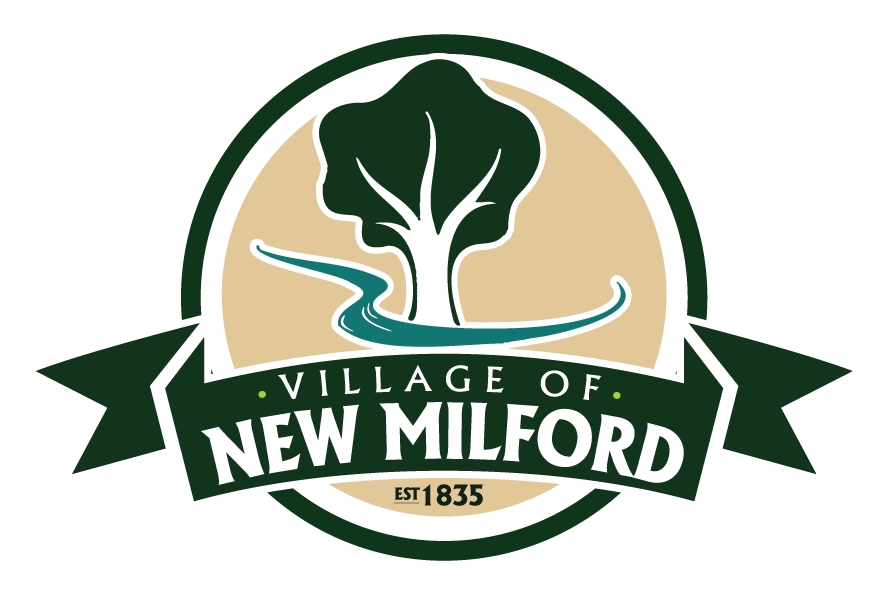CHAPTER 8
FIRE PREVENTION AND PROTECTION
ARTICLE 1. HAZARDOUS MATERIALS
Sec. 8-1. – Definitions.
Sec. 8-2. – Prohibited acts.
Sec. 8-3. – Response authority.
Sec. 8-4. – Liability for costs.
Sec. 8-5. – Defenses.
Sec. 8-6. – Release in accordance with the law.
Sec. 8-7. – Public duty immunity.
Sec. 8-8. – Contractual indemnification; subrogation.
Sec. 8-9. – Costs and penalties.
Sec. 8-1. – Definitions.
As used in this article, the following terms shall have the following meanings:
Costs: All expenses incurred by the Village and/or the New Milford Fire Protection District for any removal or remedial action.
Facility: Any building, structure, installation, equipment, pipe, or pipeline, including but not limited to any pipe into a sewer or publicly owned treatment works, well, pond, lagoon, impoundment, ditch, landfill, storage container, tank, motor vehicle, truck trailer, rolling stock or aircraft. Also, any site or area where a hazardous material has been deposited, stored, disposed of, abandoned, placed, or otherwise come to be located.
Hazardous materials: Any material, substance, or a mixture of materials or substances which are toxic, flammable, corrosive, explosive, carcinogenic, or radioactive, including, but not limited to, any substance or material which is designated a hazardous material pursuant to the “Hazardous Materials Transportation Act” (49 U.S.C.A., sections 1801 et seq.) in a quantity and form which may pose a substantial present or potential hazard to human health, property or the environment when improperly released, treated, stored, transported, disposed of, or otherwise managed.
Person: Any individual, business, firm, partnership, corporation, limited liability company, association, trust, estate, joint venture, or other legal entity, or their legal representative, agent, or assign.
Release: Any spilling, leaking, pumping, pouring, emitting, escaping, emptying, discharging, injecting, leaching, dumping, or disposing of hazardous material into or on any land, air, water, well, stream, sewer or pipe so that such hazardous material or any constituent thereof may enter the environment.
Remedial action: Any action consistent with permanent remedy taken instead of or in addition to removal actions in the event of a release or threatened release of hazardous material into the environment to prevent or minimize the release of hazardous materials so that they do not migrate to cause a substantial present or potential hazard to human health, property or the environment. The term includes, but is not limited to, such actions at the location of the release as storage, confinement, perimeter protection using dikes, trenches, or ditches, clay cover, neutralization, cleanup of released hazardous materials or contaminated materials, recycling or reuse, diversion, destruction, segregation of reactive wastes, repair or replacement of leaking containers, collection of leachate and runoff, onsite treatment or incineration, provision of alternate water supplies, and any monitoring reasonably required to assure that such actions protect the public health and welfare and the environment.
Removal: The cleanup or removal of released hazardous materials from the environment, such actions as may be necessary or appropriate to monitor, assess, and evaluate the release or threat of release of hazardous materials, the disposal of removed material, or the taking of such action as may be necessary to prevent, minimize, or mitigate damage to the public health or welfare or the environment. The term includes but is not limited to security fencing, provision of alternative water supplies, and the temporary evacuation of threatened individuals.
Response: Any removal or remedial action.
Sec. 8-2. – Prohibited acts.
No person shall cause, threaten or allow the release of hazardous materials into the environment unless such release is in accordance with an appropriate permit granted by the state environmental protection agency or other state or federal agency having primary jurisdiction over the release and such release is in such place, and manner as will not create a substantial present or potential hazard to human health, property or the environment.
Sec. 8-3. – Response authority.
(a) The fire chief of the New Milford Fire Protection District, or his authorized representative, shall have authority to respond to any release or threatened release of hazardous materials within the Village or which affects or may affect the Village, including, but not limited to, any public water supply, wells or sewage treatment works. This authority includes, but is not limited to, remedial action and removal.
(b) The fire chief shall report any release or threatened release of hazardous materials to all appropriate Federal, State, and local public health, safety, and emergency agencies within 24 hours of any substantial release of hazardous materials.
(c) The fire chief shall take such remedial or removal action as he may deem necessary or appropriate to respond to the release or threatened release of hazardous material.
(d) All Village personnel shall cooperate with and operate under the direction of the fire chief or other person then exercising response authority under this article until such time as the person exercising such response authority has determined that the response is complete or responsible for response is assumed by the federal, state or local public health, safety or emergency agency having primary jurisdiction over the release or threatened release.
Sec. 8-4. – Liability for costs.
Notwithstanding any other provision or rule of law, and subject only to the defenses set forth in Section 8-5 hereof, the following persons shall be jointly and severally liable for all costs of removal and remedial action incurred by the Village and/or the New Milford Fire Protection District as a result of a release or threatened release of hazardous material:
(a) The owner and operator of a facility or vessel from which there is a release or substantial threat of release of hazardous material;
(b) Any person who, at the time of disposal, transport, storage, or treatment of a hazardous material, owned or operated the facility or vessel used for such disposal, transport, treatment, or storage from which there was a release or substantial threat of a release of any such hazardous material;
(c) Any person who by contract, agreement, or otherwise has arranged with another party or entity for transport, storage, disposal, or treatment of hazardous materials owned, controlled, or possessed by such person at a facility owned or operated by another party or entity from which facility there is a release or substantial threat of a release of such hazardous materials;
(d) Any person who accepts or accepts any hazardous materials for transport to disposal, storage or treatment facilities from which there is a release or a substantial threat of release of such hazardous substances.
Sec. 8-5. – Defenses.
There shall be no liability under Section 8-4
(a) An act of God; hereof for a person otherwise liable who can establish by a preponderance of the evidence that the release or substantial threat of release of hazardous material and the damages resulting therefrom were caused solely by:
(b) An act of war;
(c) An act or omission of a third party, other than an employee or agent of the defendant, or other than one whose act or omission occurs in connection with a contractual relationship existing directly or indirectly with the defendant (except where the sole contractual arrangement arises from a published tariff and acceptance for carriage by a common carrier by rail), if the defendant establishes by a preponderance of the evidence that:
1. He exercised due care with respect to the hazardous materials concerned, taking into consideration the characteristics of such hazardous material, in light of all relevant facts and circumstances; and
2. He took precautions against foreseeable acts or omissions of any such third party and the consequences that could foreseeably result from such acts or omissions.
(d) Any combination of the foregoing.
Sec. 8-6. – Release in accordance with the law.
There shall be no liability under this article for any release permitted by state or federal law, but only to the extent that such release is made in accordance with applicable state and federal laws, regulations and permit requirements, and the ordinances of the Village.
Sec. 8-7. – Public duty immunity.
There shall be no liability under this article for damages as a result of any actions taken or omitted by the responsible authority, his agents, and employees with respect to an incident creating a danger to public health, welfare, or the environment as a result of any release or threatened release of hazardous material including, but not limited to, actions taken or omitted in the course of rendering:
(a) Remedial action or removal under this article;
(b) Care, assistance or advice in accordance with this article;
(c) Care, assistance, or advice in accordance with the national contingency plan pursuant to the Comprehensive Environmental Response, Compensation and Liability Act (42 U.S.C.A. Section 9605).
(d) Care, assistance, or advice in accordance with the Hazardous Material Emergency Response Reimbursement Act (430 ILCS 55/1);
(e) Care, assistance, or advice at the direction of the response authority;
(f) Care, assistance, or advice at the direction of an onsite coordinator appointed under said national contingency plan, the Hazardous Material Emergency Response Reimbursement Act, any Village emergency service and disaster plan now in effect or hereinafter adopted or by such other public health, safety or emergency agency exercising jurisdiction over the release or threatened release of hazardous material.
Sec. 8-8. – Contractual indemnification; subrogation.
(a) No conveyance, transfer, sale, indemnification, hold harmless, or similar agreement shall be effective to release the owner or operator of any facility or vessel or any person who may be liable for a release or threat of release under this article from the liability imposed under this article. Nothing in this section shall bar any agreement to insure, hold harmless or indemnify a party to such agreement for any liability under this article.
(b) Nothing in this section, including the provisions of subsection (a) hereof, shall bar a cause of action that an owner or operator or any other person subject to liability under this article, or a guarantor, has or would have, by reason of subrogation or otherwise against any person.
Sec. 8-9. – Costs and penalties.
Any person who is liable for the release or threatened release of a hazardous material who fails to pay for or provide removal or remedial action upon or in accordance with notice and request of the responsible authority, or in accordance with any order of any court having jurisdiction of the matter, shall be liable to the Village for any costs incurred by the Village and/or the New Milford Fire Protection District, including but not limited to attorney fees and any other costs associated with the enforcement of this section, as a result of such failure to provide or take such removal or remedial action, together with the cost of any removal or remedial action taken by the Village and/or the New Milford Fire Protection District in accordance with this article. In addition, any such person shall be guilty of a violation of this article and shall be fined no less than $100.00 nor more than $750.00 for each offense. A separate offense shall be deemed committed for each day on which a violation occurs or continues. The Village shall have the right to enforce the provision of this Section on behalf of the New Milford Fire Protection District to recover any costs incurred by the New Milford Fire Protection District related to any remedial or removal action taken by the New Milford Fire Protection District.” (Ordinance No. 2013-7)
REFERENCES
Village of New Milford. “CODE OF ORDINANCES VILLAGE OF NEW MILFORD.” The Village of New Milford, Sept. 2021, villageofnewmilford.com/wp-content/uploads/2022/07/New-Milford-Code-of-Ordinances-September-2021.pdf.

